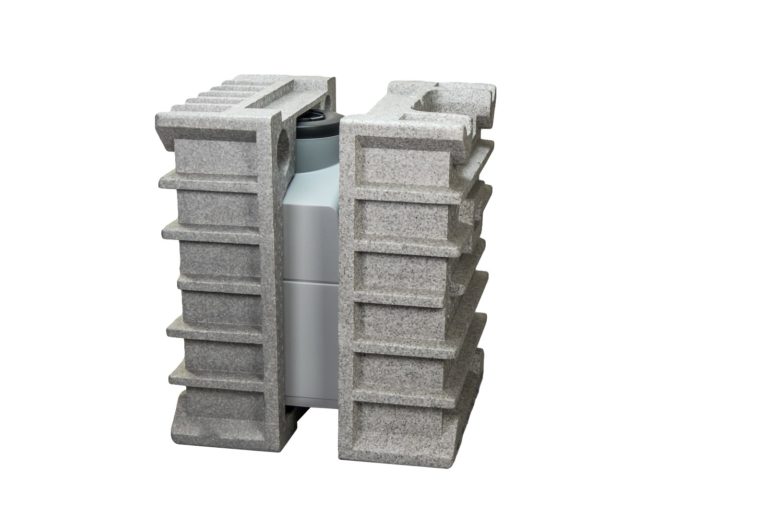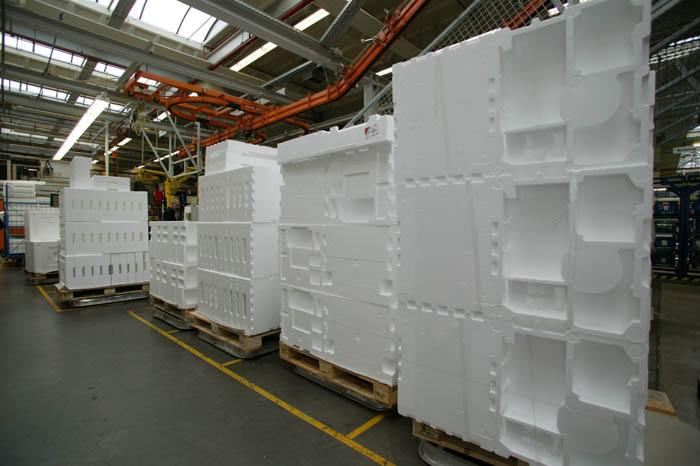What is environmentally friendly packaging?
Consumers and companies increasingly demand ‘green’ packaging, but what should you be focusing on, and what is environmentally friendly packaging? Two Sides, a European not-for-profit organisation, studied consumer perceptions in a European survey of 5,900 consumers. One of the findings: consumers are willing to spend more for environmentally friendly packaging.
Sustainable packaging materials



Packaging materials made from particle foams possess high-quality shock-absorbing and thermal properties, and are very sustainable. These materials are used to provide optimal protection during transport of heat recovery units, central heating boilers or household appliances. These packaging materials:
- Are sustainably produced; HSV uses green steam & renewable electricity
- Are lightweight, leading to lower CO2 emissions during transport
- Offer the best protection
- Can be completely recycled over and over while retaining valuable properties
Recyclable and sustainable packaging
Consumers and companies are becoming increasingly eco-conscious. More and more often, we see that decisions are made based in part on whether packaging is recyclable and sustainable. Before deciding to buy, decision-makers look at aspects like:
- The carbon footprint of the material
- How sustainable the production processes are and which measures have been implemented by the manufacturer to mitigate environmental impact
- Options for reusing and recycling materials
Obviously, decision-makers not only try to find the right packaging solution for their needs, but also consider price, quality and standards of service.

What packaging is sustainable, climate-conscious and eco-friendly?
There is no easy answer to that question. But you can consider the quantity of raw materials that goes into the packaging, the materials required, and the environmental impact of those materials. It is possible to determine how the production process affects CO2 emissions. Examples include consumption of energy, water and other resources, and whether measures have been implemented to mitigate environmental impact.
Based on this information, you will be able to choose the packaging material that has the lowest possible impact on climate and the environment. Other aspects also play a role, such as the quantity of packaging materials needed to achieve a specific level of protection, or create certain thermal properties.

An example: The particle foam known as EPS, also referred to as airpop engineered air, expanded polystyrene or tempex, insulates almost twice as effectively as cardboard – and cardboard weighs almost 35 times more than EPS per m3. Producing cardboard packaging that insulates just as well as EPS packaging would require almost 70 times more packaging material. Producing one kg of cardboard increases CO2 emissions by 17% compared to one kg of EPS.
That means that producing a cardboard box with identical insulating properties would lead to 10 times as much CO2 emissions.
For that reason, packaging materials made from particle foam are preferred in cold chains. To facilitate additional carbon-reducing measures and discover the most sustainable solution, environmental impact assessments were developed, such as the life-cycle analysis or LCA. An LCA maps out a product’s entire life cycle. Here is an LCA for EPP.
Particle foams are sustainable
Particle foams, such as EPS and EPP, are sustainable. They consist of about 98% air, and only 2% raw materials. Particle foams are lightweight, leading to reduced CO2 emissions during transport. They have high compressive strength, dimensional stability and shock-absorbent properties, ensuring optimal protection for products. After use, they can easily be completely recycled over and over while retaining valuable properties. These properties make particle foams a very environmentally friendly and sustainable choice for your packaging. Find out more about the sustainable initiatives at HSV.
Contact
Are you interested in developing sustainable packaging, or do you have another question? Call +31-318 648 999 or send an e-mail. The particle foam engineers at HSV would be happy to assist you.
Background information on the study
The European study was commissioned by Two Sides and conducted online in March 2020. 5,900 consumers took part in the study, through nationally representative surveys in Denmark, Sweden, Norway, Finland, Germany, France, Italy, Austria and the UK.
























